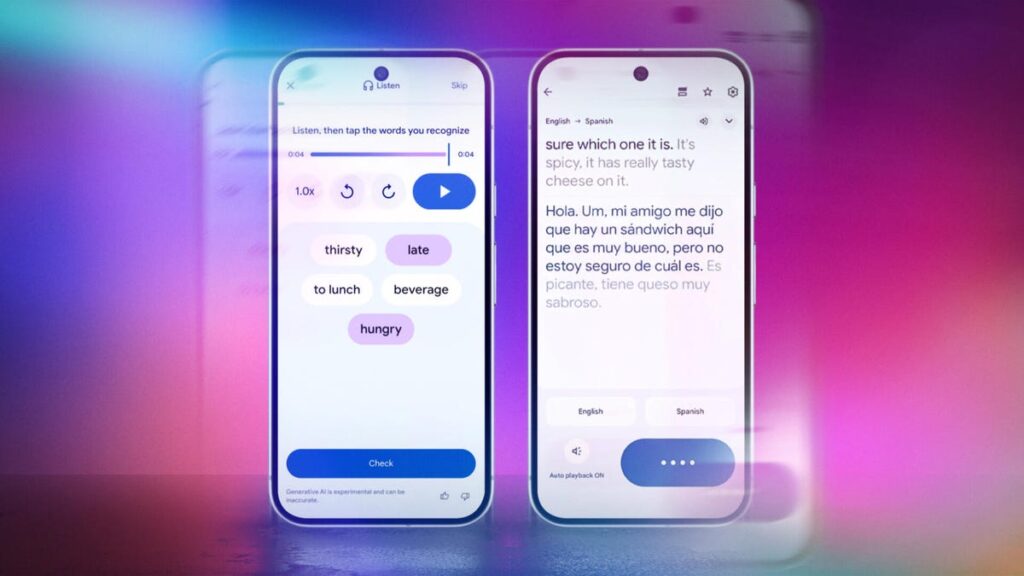Google Translate is getting an AI upgrade designed to make real-time conversations and language learning easier. The update is rolling out this week in the Translate app on iOS and Android.
The first tool, for live translations, lets you have a back-and-forth conversation with someone by surfacing audio and text translations as you speak, so you can easily follow along. Advanced Gemini models allow for support of more than 70 languages, including Arabic, French, Hindi, Korean and Spanish. Google says its voice and speech recognition models are trained to isolate sounds, so the live translation feature should also work in noisy environments like an airport or a cafe.
I gave the Arabic translation a spin, and it did a good job picking up on even unconventional Iraqi slang. Judging from my intermediate knowledge of Spanish, it also translated my rambling well. I also like that Translate offers both text and audio translations, so you can go with whichever medium you prefer or revisit what was said via the on-screen text.
A second feature is designed to help you practice a new language. You can choose whether you currently have a basic, intermediate or advanced understanding of the language you’re learning and then set a goal. For example, I noted that I wanted to practice Spanish so I could get around the city and have casual conversations (hearkening to my days at Mobile World Congress in Barcelona when I ambitiously dusted off my high school Spanish).
Translate will then surface recommended scenarios like asking for the nearest bus stop, greeting a neighbor or chatting about your hobbies. You can then choose either a listening or speaking exercise. In the listening sessions, you’ll tap the words you hear, and in the speaking one, you can practice having a back-and-forth conversation. The language learning feature is currently available for English speakers practicing Spanish and French, and for Spanish, French and Portuguese speakers practicing English.
“These updates are made possible by advancements in AI and machine learning,” Google Product Manager Matt Sheets said in a blog post. “As we continue to push the boundaries of language processing and understanding, we are able to serve a wider range of languages and improve the quality and speed of translations. And with our Gemini models in Translate, we’ve been able to take huge strides in translation quality, multimodal translation, and text-to-speech capabilities.”
This comes as Google adds other language-specific features like Voice Translate on the Pixel 10 series. That feature can also translate what someone is saying in real time, but while chatting on the phone, and goes the extra mile of mimicking the sound of their voice, instead of superimposing a robotic one. Gemini Live can also have a back-and-forth conversation in a handful of languages. And last year, Google Translate added 110 new languages thanks to AI advancements.
How to access Google Translate’s new tools
The live translate and language learning capabilities in Google Translate are rolling out now on iOS and Android. Live translations are currently limited to users in the US, India and Mexico.
To access the new features, open up the Google Translate app, which you can download in the Apple App Store or Google Play. You’ll see a tab for “Live translate” on the bottom left, and another for “Practice,” the language learning tool, on the right.
When you go into Live translate, you can pick which languages you want to translate and then start talking. The translated audio and text will automatically appear.
Tapping into Practice will prompt you to set up the language, level and goal you’re looking to meet, and then lead you to tailored exercises.
Read the full article here
